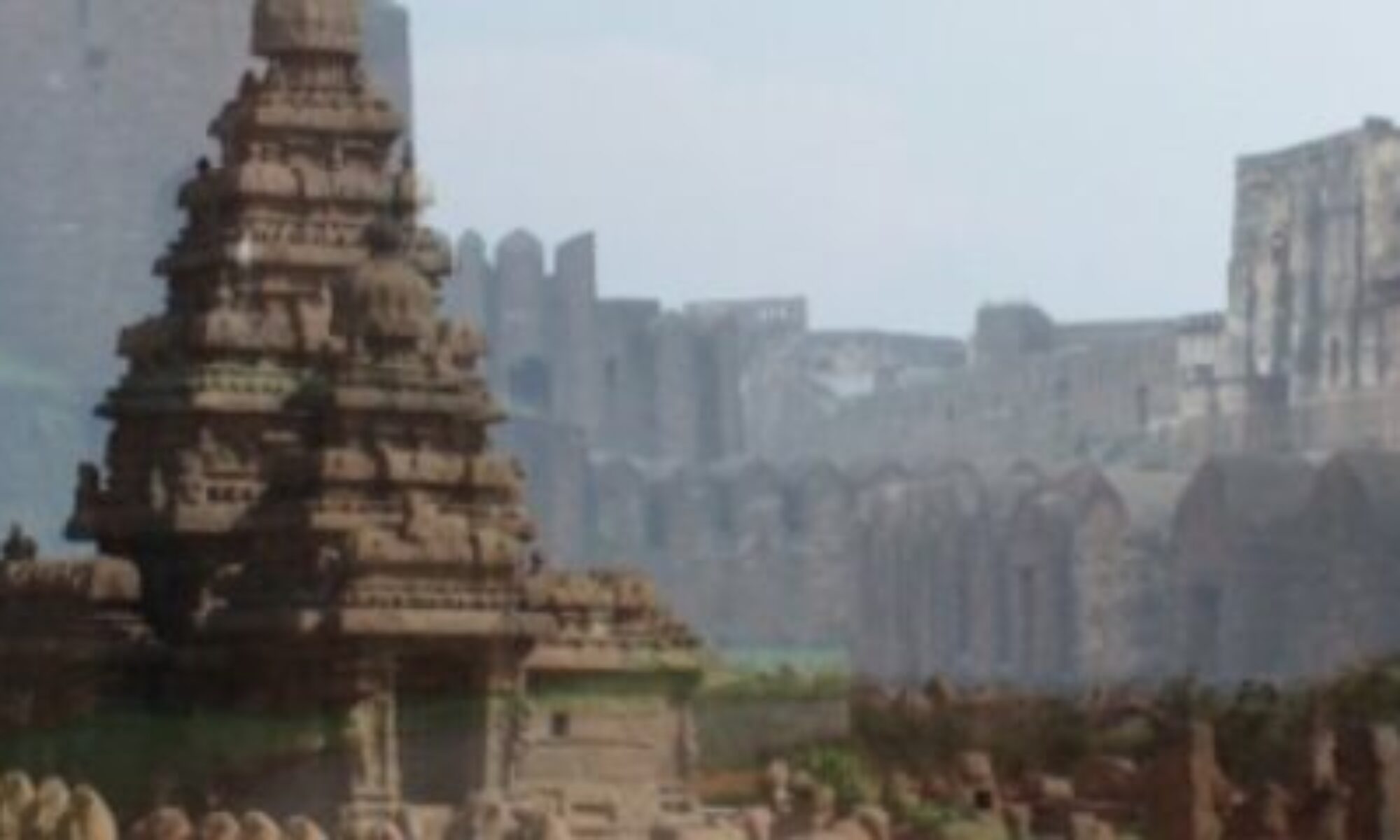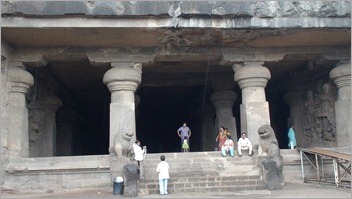 This cave is compared with the ones at Elephanta and Jogeswari Caves but this one is larger, more finer and of a later age. This is the best preserved and largest of all three, which were executed on the same plan, light being introduced from three sides, which is extremely difficult in cave architecture. The hall, including the shrine is 148 feet by 149 and nearly 18 feet in height. However, the entire excavation extends to almost 250 feet. Two large lions with small elephants under their paws guard the steps which lead to the
This cave is compared with the ones at Elephanta and Jogeswari Caves but this one is larger, more finer and of a later age. This is the best preserved and largest of all three, which were executed on the same plan, light being introduced from three sides, which is extremely difficult in cave architecture. The hall, including the shrine is 148 feet by 149 and nearly 18 feet in height. However, the entire excavation extends to almost 250 feet. Two large lions with small elephants under their paws guard the steps which lead to the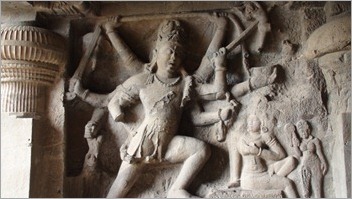 hall from three sides. In the front, is a large circle for the Nandi. The hall is in the form of a cross, the roof supported by 26 massive pillars.
hall from three sides. In the front, is a large circle for the Nandi. The hall is in the form of a cross, the roof supported by 26 massive pillars.
There are large sculptures in the front aisles on three sides. In the west aisle, on the south end we find Ravana lifting the Kailas mountain, as we have seen is repeated at many places in Ellora. In the north end, we find Bhairava with two victims. In the south verandah there is a large pit opposite the landing. In the west end Siva and Parvati are playing the dice game, Vishnu and Brahma standing on either side.
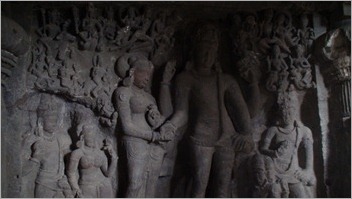 In the east end is the marriage scene of Siva and Parvati. Both are holding a flower i
In the east end is the marriage scene of Siva and Parvati. Both are holding a flower i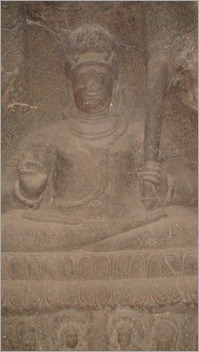 n the left hand; below, to the right, kneeling by the sacrificial fire, is Brahma, with three heads, acting as priest; to the left are Mena and Himalaya, the parents of the bride with a flower and coconut. Above are the gods and goddesses. To the south of this is a gigantic Devi with round head-dress peaked in front. To the south of this are stairs descending to the stream below.
n the left hand; below, to the right, kneeling by the sacrificial fire, is Brahma, with three heads, acting as priest; to the left are Mena and Himalaya, the parents of the bride with a flower and coconut. Above are the gods and goddesses. To the south of this is a gigantic Devi with round head-dress peaked in front. To the south of this are stairs descending to the stream below.
In the northern verandah is Siva as a yogi or ascetic, with a club in his left hand, and seated on a lotus upheld by Naga figures, with two females worshipping behind each, and evident copy from the figures of Buddha..
On the east wall, is a tall female figure – a river goddess – standing on a tortoise., with a single female attendant and a gandharva. This is in a small court on the north side of the cave, in the east of which is a low cave, with a large block of stone inside.
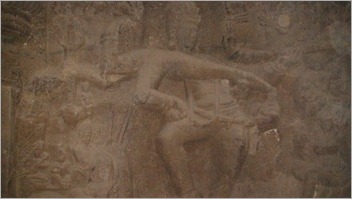 There is one very interested sculpture in this cave, of Siva in the dancing form or Nataraja. Apparently, the sculptor was an absolute amateur, who was trying his hand on carving. This is clearly visible in the way the figure is sculpted. There was no plan in the first place. Alignment of various parts of the body is completely missing. For example, no alignment from the head to the hands and waist. Even the vital statistics are not consistent with one another. At the shoulders its too fat and the wrist is too thin. Parvati is seated at his left, perhaps because this dance is said to be
There is one very interested sculpture in this cave, of Siva in the dancing form or Nataraja. Apparently, the sculptor was an absolute amateur, who was trying his hand on carving. This is clearly visible in the way the figure is sculpted. There was no plan in the first place. Alignment of various parts of the body is completely missing. For example, no alignment from the head to the hands and waist. Even the vital statistics are not consistent with one another. At the shoulders its too fat and the wrist is too thin. Parvati is seated at his left, perhaps because this dance is said to be 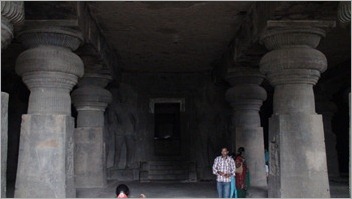 executed by him occasionally for her pleasure.
executed by him occasionally for her pleasure.
The shrine is in the back wing of the cave and is a small square room containing a pedestal with a linga. It has four doors each guarded by a pair of gigantic dwarapalas, each holding a flower in his right hand with a female attendant also holding a flower. The head-dresses are varied in almost every case.
Now we come to the last Saiva Cave, also called as the Chota Kailas.
